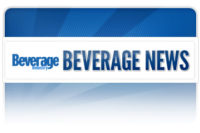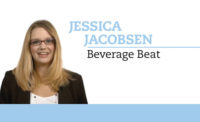Americans more comfortable with online shopping
Ecommerce still lagging for consumable products

The convenience and ease of online shopping is one that I’m sure many U.S. consumers have been happy to take advantage of. Whether it’s finding a unique décor item for my friend’s baby shower or that childhood book that my brother and I loved to read, ecommerce has allowed me to obtain items that I otherwise might not have been able to. However, the online shopping bug has not seen the same results with consumables when compared with other consumer packaged goods (CPG) products.
John Burbank, president of strategic initiatives for New York-based Nielsen, notes that 63 percent of Americans report researching purchases online. Of those polled, 63 percent also indicated that they look up reviews, while 78 percent considered online shopping convenient. Despite these positive numbers, Americans still express some hesitation when it comes to ecommerce, Burbank adds.
“Nearly 50 percent of Americans — 46 percent — cited shipping costs as a reason for their reluctance, and nearly 40 percent — 37 percent — said they don’t trust giving their credit card information online,” he says. “Americans’ willingness to make airline and hotel/tour reservations and to buy electronic equipment, ebooks and music (non-download) have all more than doubled in the last three years. Grocery shopping online is less frequent, but it is still growing.”
Burbank explains that, compared with any other category, consumables are the products consumers are least willing to purchase. However, as fears lessen about sharing credit card information online and costs for products and shipping are reduced, CPG owners can benefit. He notes that if these tactics take place, more online CPG purchases will result, including beverages.
“Beverage manufacturers cannot afford to let Americans’ current preference for online browsing rule their decisions moving forward,” Burbank says. “They must find ways to meet the needs of their online consumers as those needs grow. Offering features like same-day delivery and experimenting with drone delivery are all things online retailers are attempting lately.”
For example, SodaStream has found a way to overcome some of these shipping concerns, because the products they ship are flavored syrups, which can be less costly because water is not being included with the product, he notes.
“Beverage brands must be willing to try new strategies and experiment with their ecommerce offerings now before the online consumer base and the accompanying stakes get higher,” Burbank says.
However, not all regions have the same sentiment when it comes to consumables and online shopping. Burbank notes that Asia-Pacific has the highest ecommerce purchase rates, and China and South Korea are leaders in online purchases of cosmetics and grocery items.
But America also might see online shopping benefit from the younger generation of consumers: millennials. “We can also look at millennials to see where the future lies in American ecommerce,” Burbank says. “In this recent Nielsen survey, millennials accounted for more than half of those intending to use ecommerce channels for a whole range of category purchases — about four times the representation of baby boomers.”
Looking for a reprint of this article?
From high-res PDFs to custom plaques, order your copy today!






